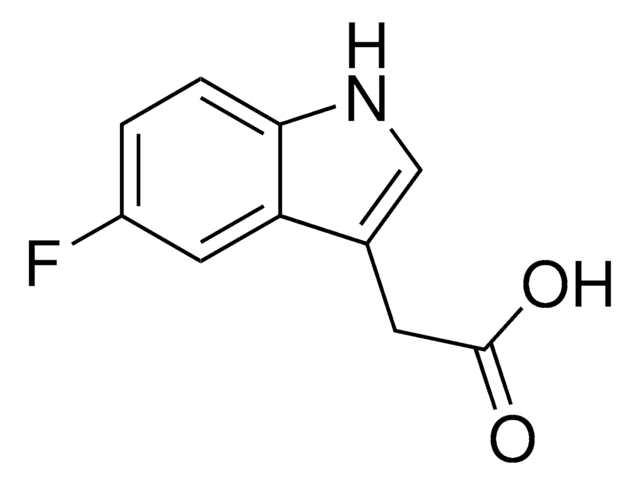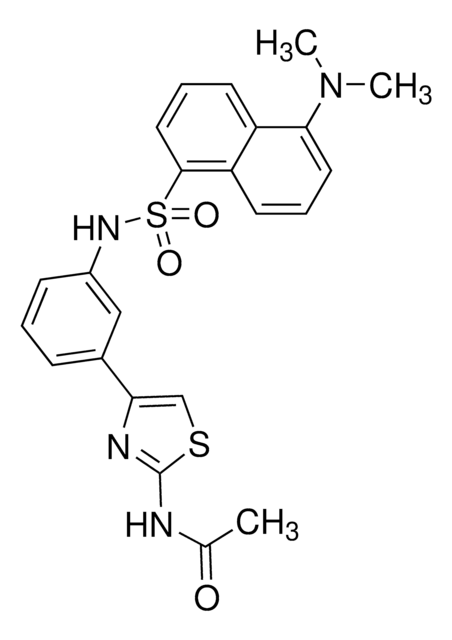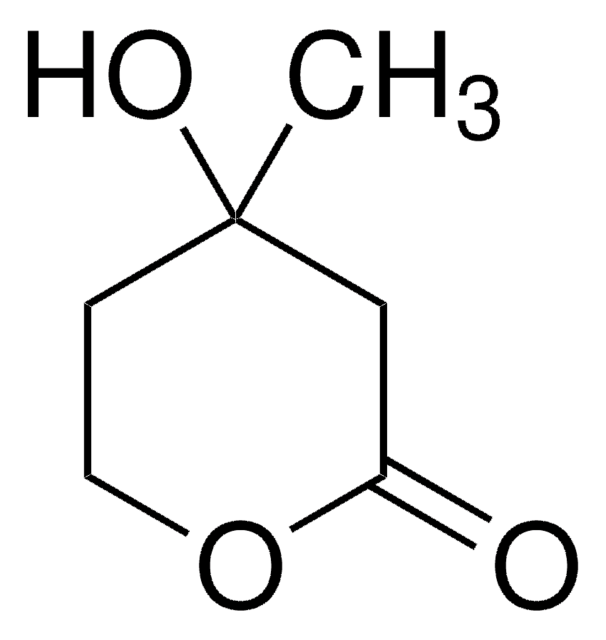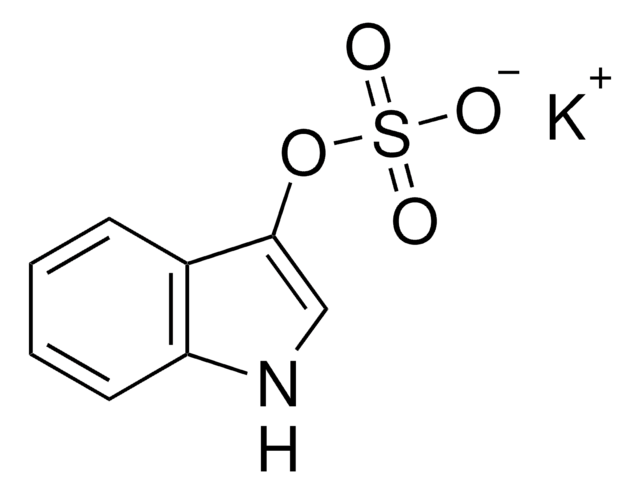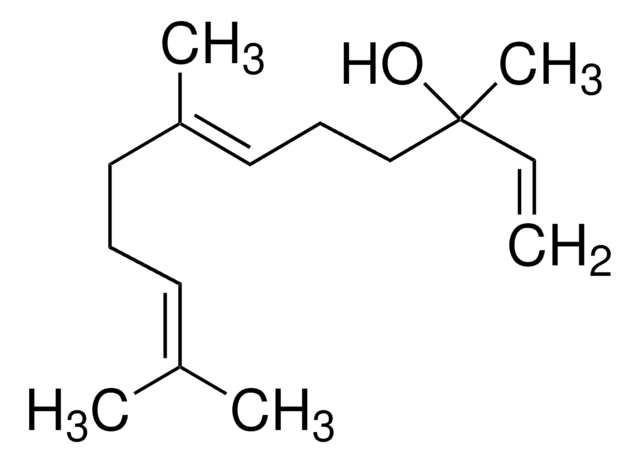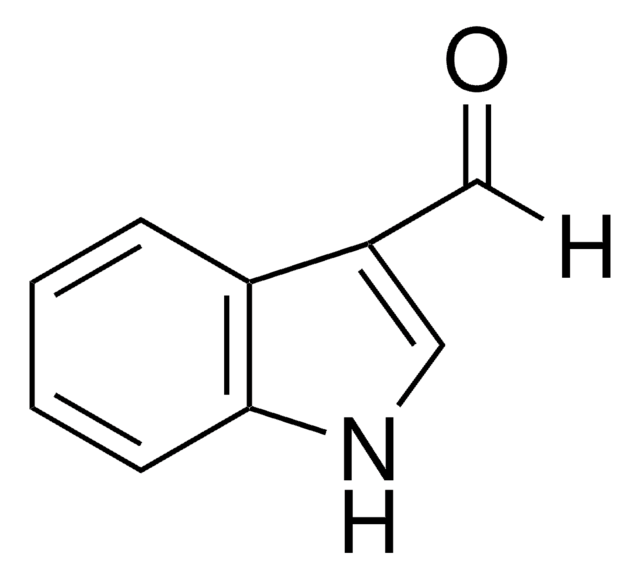Kluczowe dokumenty
G5048
Geranylgeranylacetone
Synonim(y):
6,10,14,18-Tetramethyl-5,9,13,17-nonadecatetraen-2-one, mixture of (5E,9E,13E) and (5Z,9E,13E) isomers, GGA, Selbex, Teprenone, UNII-S8S8451A4O
About This Item
Polecane produkty
Próba
≥98% (HPLC)
Poziom jakości
Formularz
oil
warunki przechowywania
protect from light
kolor
clear
rozpuszczalność
DMSO: >5 mg/mL
temp. przechowywania
−20°C
ciąg SMILES
C\C(C)=C\CC\C(C)=C\CC\C(C)=C\CC\C(C)=C\CCC(C)=O
InChI
1S/C23H38O/c1-19(2)11-7-12-20(3)13-8-14-21(4)15-9-16-22(5)17-10-18-23(6)24/h11,13,15,17H,7-10,12,14,16,18H2,1-6H3/b20-13+,21-15+,22-17+
Klucz InChI
HUCXKZBETONXFO-NJFMWZAGSA-N
Zastosowanie
Działania biochem./fizjol.
Kod klasy składowania
10 - Combustible liquids
Klasa zagrożenia wodnego (WGK)
WGK 3
Temperatura zapłonu (°F)
Not applicable
Temperatura zapłonu (°C)
Not applicable
Wybierz jedną z najnowszych wersji:
Masz już ten produkt?
Dokumenty związane z niedawno zakupionymi produktami zostały zamieszczone w Bibliotece dokumentów.
Nasz zespół naukowców ma doświadczenie we wszystkich obszarach badań, w tym w naukach przyrodniczych, materiałoznawstwie, syntezie chemicznej, chromatografii, analityce i wielu innych dziedzinach.
Skontaktuj się z zespołem ds. pomocy technicznej

